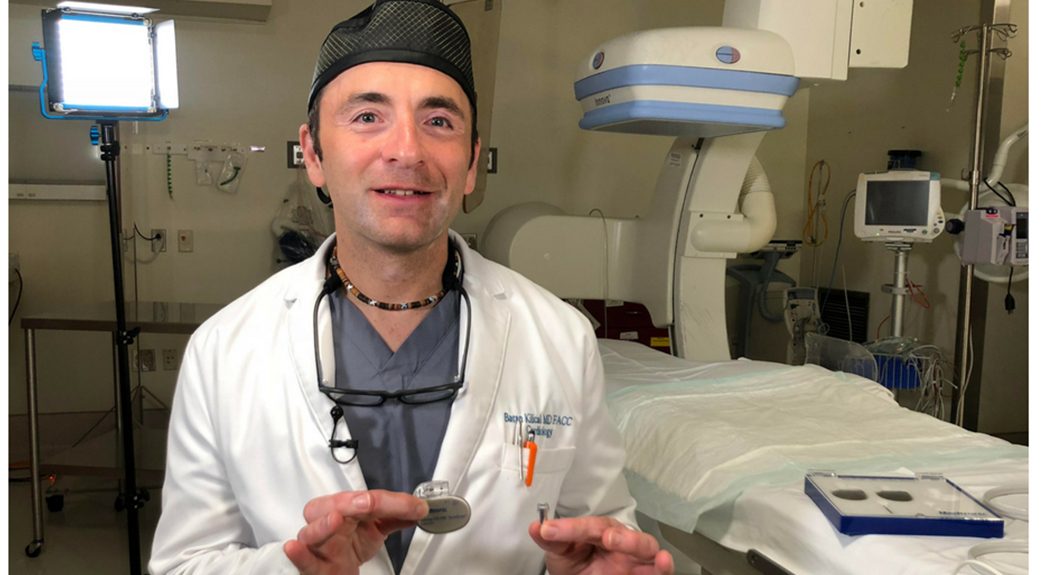Nancy Dick, 78, was sitting at a table playing poker with several of her good friends. They’ve been getting together once a month for the past seven years. Their friendship predates their card games, taking them back to kindergarten. Fast-forward several decades and now, instead of playing on the schoolyard, they find joy in exchanging dimes and nickels. “We laugh a lot together,” says Nancy.
Mary, whom Nancy has known the longest out of the group, always carries an oxygen tank with her. Out of curiosity that afternoon, Nancy asked Mary if she could try her pulse oximeter. “My oxygen was OK but my pulse was 43,” says Nancy. “Mary asked me to try it again and my pulse was 44, which is still very low.”
Concerned about the pulse reading, Mary encouraged Nancy to call her doctor right away. Worried, Nancy took action. “I called my internist who was able to see me next morning,” she says.
After doing an EKG to record the electrical activity of her heart, Nancy’s internist described her pulse as “irregularly irregular” and scheduled her to see Juan Cordero, MD, cardiologist at Anne Arundel Medical Group (AAMG) Cardiology Specialists. He immediately said she needed to see an electrophysiologist, or a heart doctor who specializes in hearth arrhythmias. A few days later she would meet with Baran Kilical, MD, cardiologist and electrophysiologist with AAMG. He told her that what she had would not kill her, but he could improve her quality of life. “I knew that I was dragging,” Nancy recalls. “I couldn’t walk further than 25 feet without being out of breath. I would fall asleep at the drop of a hat.”
Dr. Kilical’s recommendation? A Micra pacemaker.
What is a Micra pacemaker?
The Micra Transcatheter Pacing System (or Micra) is the newest and the world’s smallest pacemaker, and FDA approved for use in the U.S. since April 2016. Currently, Anne Arundel Medical Center (AAMC) is one of only a few Maryland hospitals offering Micra pacemakers. Compared to traditional surgery with an incision, Micra can inserted through a catheter in the patient’s groin. The Micra pacemaker is about the size of a large vitamin capsule and 93 percent smaller than a traditional pacemaker.
Dr. Kilical describes the several advantages of this small technology. “A traditional pacemaker requires an incision on the chest of about 3-5 cm in length,” says Dr. Kilical. “Micra has no incision and is cosmetically more appealing. There are lower complications because there are no leads, which most complications long-term with a pacemaker are due to the leads and them malfunctioning, breaking or fracturing over time.”
The recovery time is also much quicker. Traditional pacemakers usually restrict patients from showering for a week and prevent heavy activity with the left arm. With Micra implants, patients can shower the next day and activity restriction decreases to roughly a week versus a full month.
How does it work?
It is less invasive and self-contained. Whereas a conventional pacemaker has leads that can fracture over time, increasing the likeliness of future complications, Micra is completely self-contained within the heart. Nancy, who had a mastectomy when she was 63, had a port on the right side of her chest and Dr. Kilical expressed his worry about scar tissue. “He gave me options,” says Nancy. “It didn’t take me any time to agree that the Micra pacemaker was the best choice.”
Here’s how the implant works, from beginning to end: During a Micra implant, an anesthesiologist will first sedate a patient. A doctor, in this case Dr. Kilical, will then proceed to take a needle and make a small hole in the femoral vein (located in the patient’s groin). Through that, he puts a delivery sheath, or a straw-like catheter, that goes up into the heart. Through that sheath, the Micra pacemaker is brought up into the right atrium and then into the right ventricle of the heart. Once Dr. Kilical has verified that it is placed correctly, he tests the device to make sure it functions appropriately. Then, Dr. Kilical will release the tether and remove the delivery system.
Is it for everyone?
No. Micra is intended for patients who need a single chamber pacemaker, also known as a ventricular pacemaker or VVIR. For Nancy, this was the perfect option.
“I knew I would be taken care of,” she says. She says her life has changed for the better. “I’ve felt good ever since,” she says. “Before, if I sat down for any length of time, I would frequently fall asleep. I’m not doing that at all. I feel a lot more energetic, I am happy camper for 78.”
Now that’s a real royal flush!




